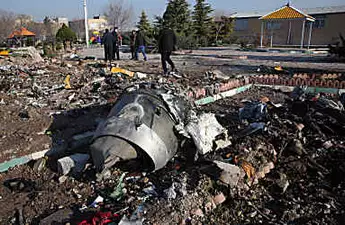Issued on: Modified:

ADVERTISING
Beijing
China's fight against pollution faces new threats from rising levels of harmful ozone gas despite an "impressive" reduction in other airborne particles, according to a report released Thursday.
The country cut its national average level of airborne PM2.5 -- tiny particles that can penetrate the lungs and enter the bloodstream -- by 27 percent between 2015 and 2019, according to the Finland-based Centre for Research on Energy and Clean Air (CREA).
China also reduced its average sulphur dioxide levels by 55 percent during this period, which CREA said was "very impressive progress".
However, levels of ozone gas, which is linked to drops in cognitive performance and educational outcomes, rose 11 percent over this period despite national efforts to fight pollution, the report said.
Ozone, along with nitrogen dioxide, "could be the next frontiers in China’s war on pollution", CREA said.
China's air quality gains were mostly achieved through "end of pipe" measures that filter out pollutants right before they enter the environment, CREA lead analyst and the report's author Lauri Myllyvirta said.
In the past few years, "most of the existing coal-fired power plants have been retrofitted to comply with new emissions standards, and currently the focus is on implementing similar retrofits in the iron and steel industry," Myllyvirta told AFP.
But "once these retrofits are completed, if coal consumption keeps rising, it will be harder and harder to make progress on air quality".
Ozone and nitrogen dioxide are also "harder to control with filters", according to the report, which said exposure to the two gases caused hundreds of thousands of premature deaths in China every year.
China built enough new coal-fired plants between January 2018 and June 2019 -- nearly 43 gigawatts worth of capacity -- to cancel out the decrease in the rest of the world, a report in November by US-based Global Energy Monitor found.
The country also plans to add an additional 147.7 gigawatts of coal plants, nearly as many as the European Union's entire gigawatts of existing capacity, the report said.
In September, Swiss air purification technology company IQAir said Beijing was expected to drop out of the list of the world's 200 most polluted cities in 2019.
But PM2.5 levels in the city are still four times higher than those recommended by the World Health Organization.

![[Photos] Remember Her? Wait Till You See Her Now [Photos] Remember Her? Wait Till You See Her Now](https://images.outbrainimg.com/transform/v3/eyJpdSI6IjIxMjA1Njc0ZjI1YjU0YjM3OWU1Y2YxMzMwZDRiNjE1NGNiMWFjZjhlOTk4NDg4Mzc3YzA3YzQ5NGVkYmIwYTAiLCJ3IjoyMzAsImgiOjE1MCwiZCI6MS41LCJjcyI6MCwiZiI6NH0.webp)





![[Pics] This Woman Thought She Was Having A Baby, But When She Looked At The Ultrasound, Her Jaw Dropped [Pics] This Woman Thought She Was Having A Baby, But When She Looked At The Ultrasound, Her Jaw Dropped](https://images.outbrainimg.com/transform/v3/eyJpdSI6Ijc3MWU2NWYxMjZjMzA3OGVkZThhOWVhNDY2MWI5YmVkYWNkYzAwNmUzMzA4NTk0MWI4N2Y4MzFkMjVhMjk5OTkiLCJ3IjoyMzAsImgiOjE1MCwiZCI6MS41LCJjcyI6MCwiZiI6NH0.webp)
![[Photos] Prince William And Kate Middleton’s New Home Is Not What You’d Expect [Photos] Prince William And Kate Middleton’s New Home Is Not What You’d Expect](https://images.outbrainimg.com/transform/v3/eyJpdSI6IjZiZTM0MWJmMjAxYzNmMTFjMzY5YzhiMDhiODAxOGMwYTJlYzM0YmYxNTE1YjIzMWFiY2NmYTE5NTlkNTg3ODMiLCJ3IjoyMzAsImgiOjE1MCwiZCI6MS41LCJjcyI6MCwiZiI6NH0.webp)
![[Photos] She Never Married And Now We Know Why [Photos] She Never Married And Now We Know Why](https://images.outbrainimg.com/transform/v3/eyJpdSI6IjkxZTdlYTYzOTgxZWZmYmZiYWU0NmRiMmY2Y2RhNTFiNTlhNWRmNWIxN2M5Y2U1NDU3YWYwM2Y2YmI1MjBhYTAiLCJ3IjoyMzAsImgiOjE1MCwiZCI6MS41LCJjcyI6MCwiZiI6NH0.webp)
No comments:
Post a Comment